We leisurely began Day 4, no pressure, no rush. We were just headed up to the next village of Upper Pisang, only 2-2.5 hours walk away (for slow trekkers like us). With no guarantee that Thorong La Pass would be open for us to cross, we still had the idea that we may have to head down in the back of our minds. We knew we would at least try to make it to Upper Pisang for its unparalleled views. As for after that, we were completely uncertain. Everything after Upper Pisang we will decide when the time comes… though it was looking like the time would come later today.
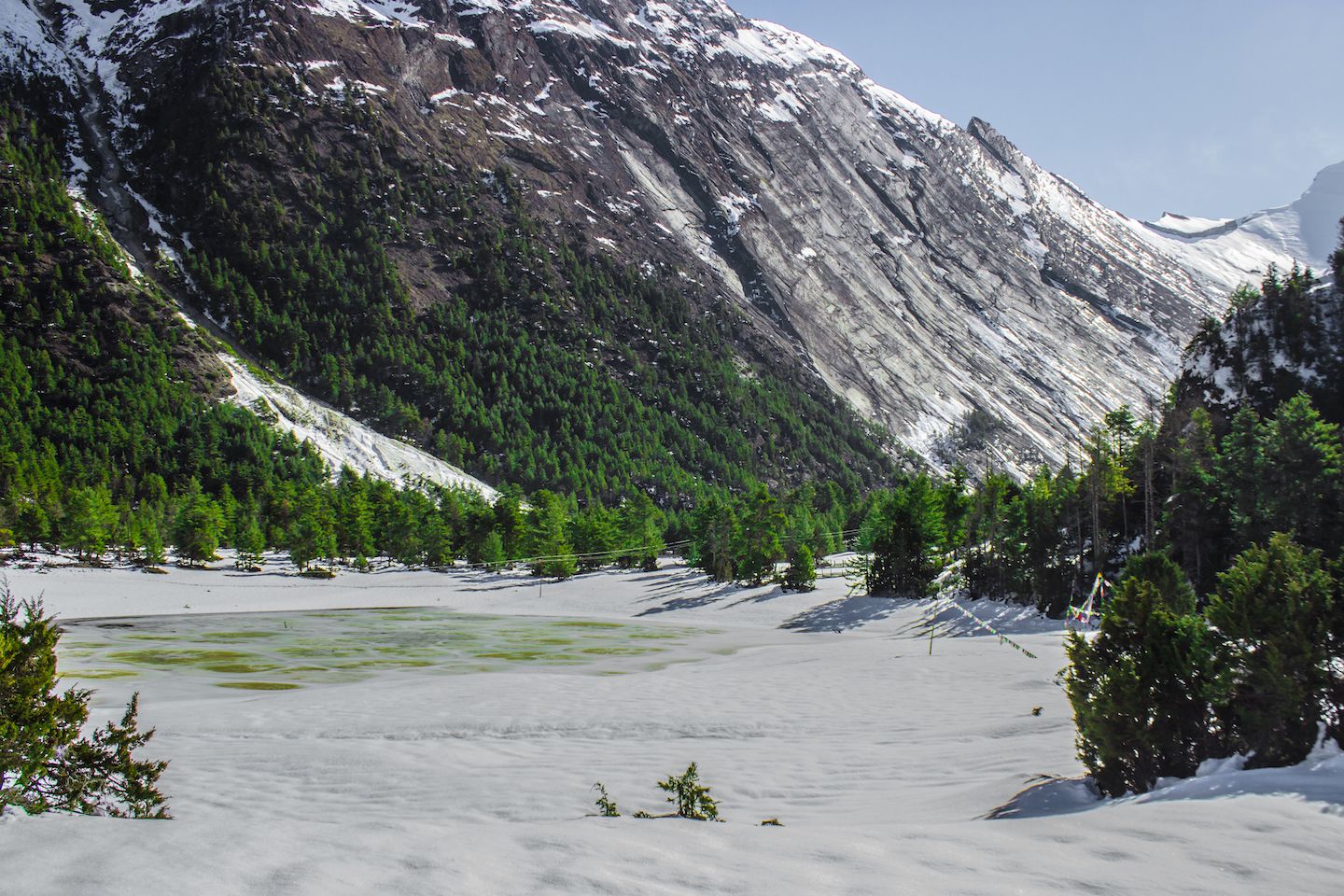
For now, we just focused on getting to our destination. Getting up in Dhikur Pokhari was harder than usual, as it was pretty cold despite it being already 7am. I’m pretty sure the area has been unseasonably cold lately due to the snow. We could only wonder how cold Thorong La Pass must be at this point, being 2000m higher. Knowing what to expect after yesterday, we dressed in long underwear, waterproof pants, and gloves. Carlos’ shoes never completely dried, so he wrapped plastic bags around his feet which did the trick.
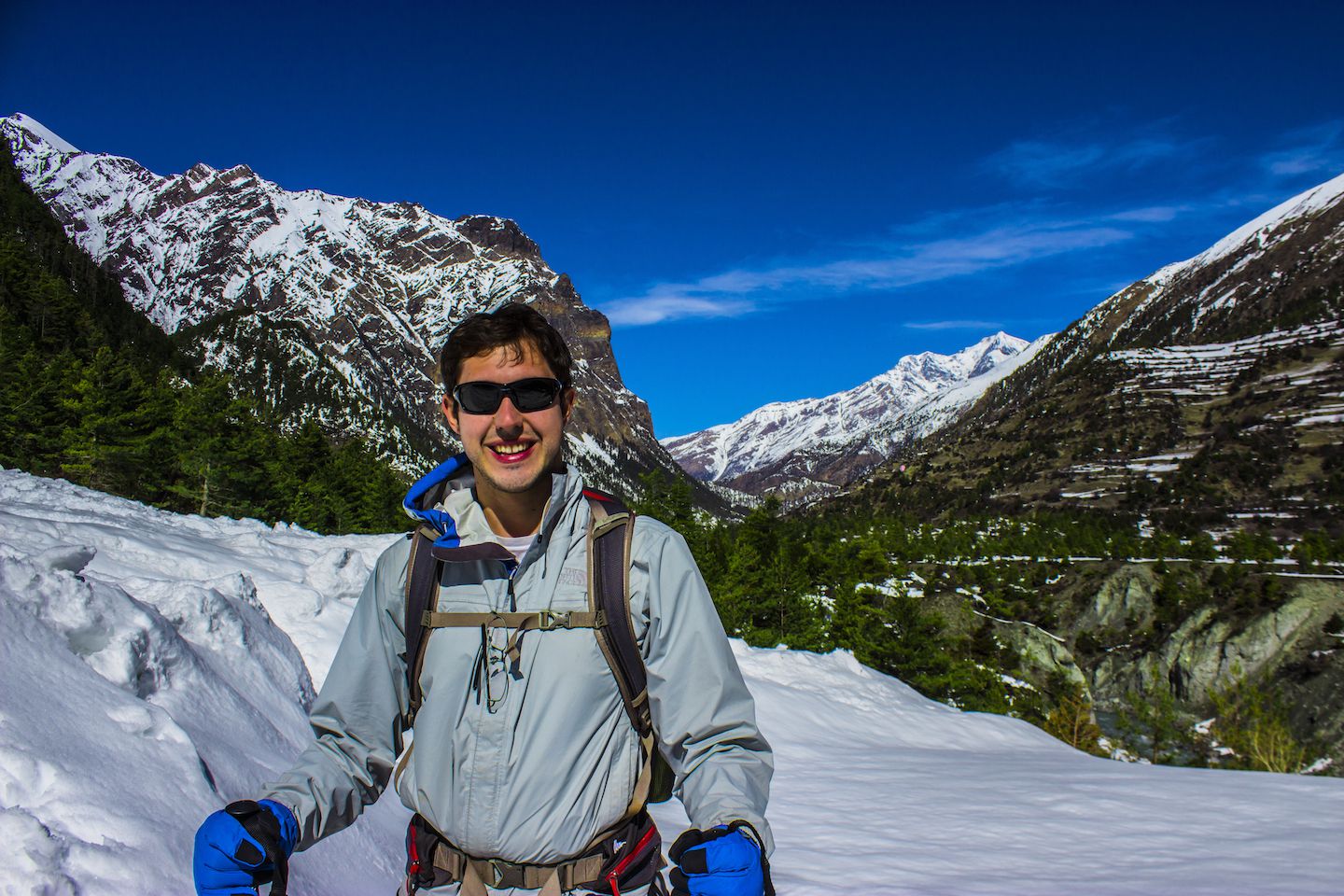
The route onwards from Dhikur Pokhari splits into two – the upper route via Upper Pisang and the lower route via Lower Pisang on either side of the same valley. The two routes eventually converge again before Manang. We had always planned on taking the higher route, as not only does it have much better views, it helps with acclimatization since several villages on the upper route are just as high as Manang. However, we didn’t realized we had missed the fork in the road until walking for a considerable amount of time on the lower route.
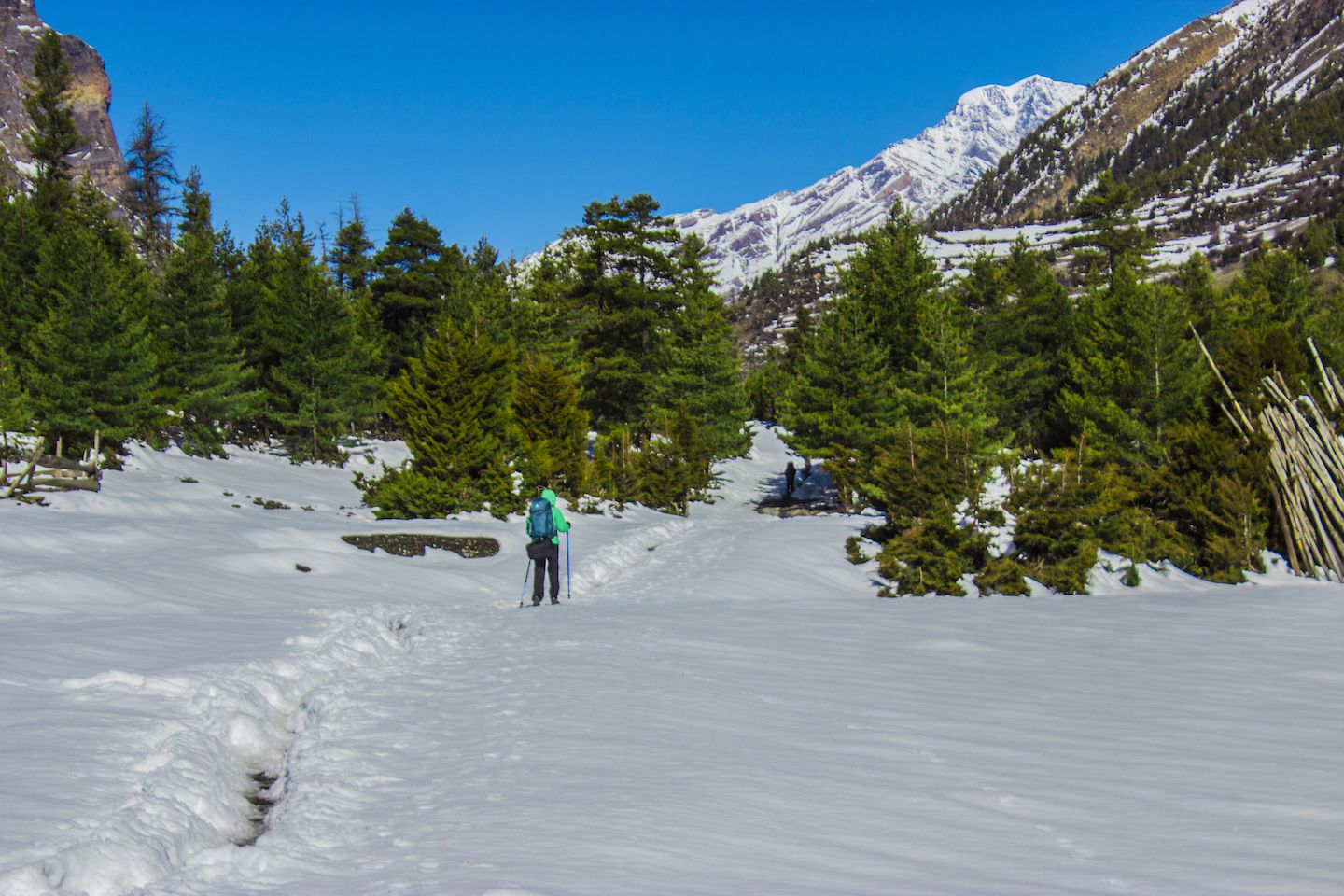
Apparently the turn off for the upper route was before the village of Dhikur Pokhari even ended. The trail through the village was similar to the conditions from the day before – ankle-deep snow with muddy paths. We must’ve just followed the muddy paths that lead to the lower trail. No matter – it was too late to turn back when we realized and there will be opportunities to cross over to the other side later. We learned later that the upper route was easier to walk in general since it’s under the sun during the day, so much of the snow had melted. The lower route was a different matter.
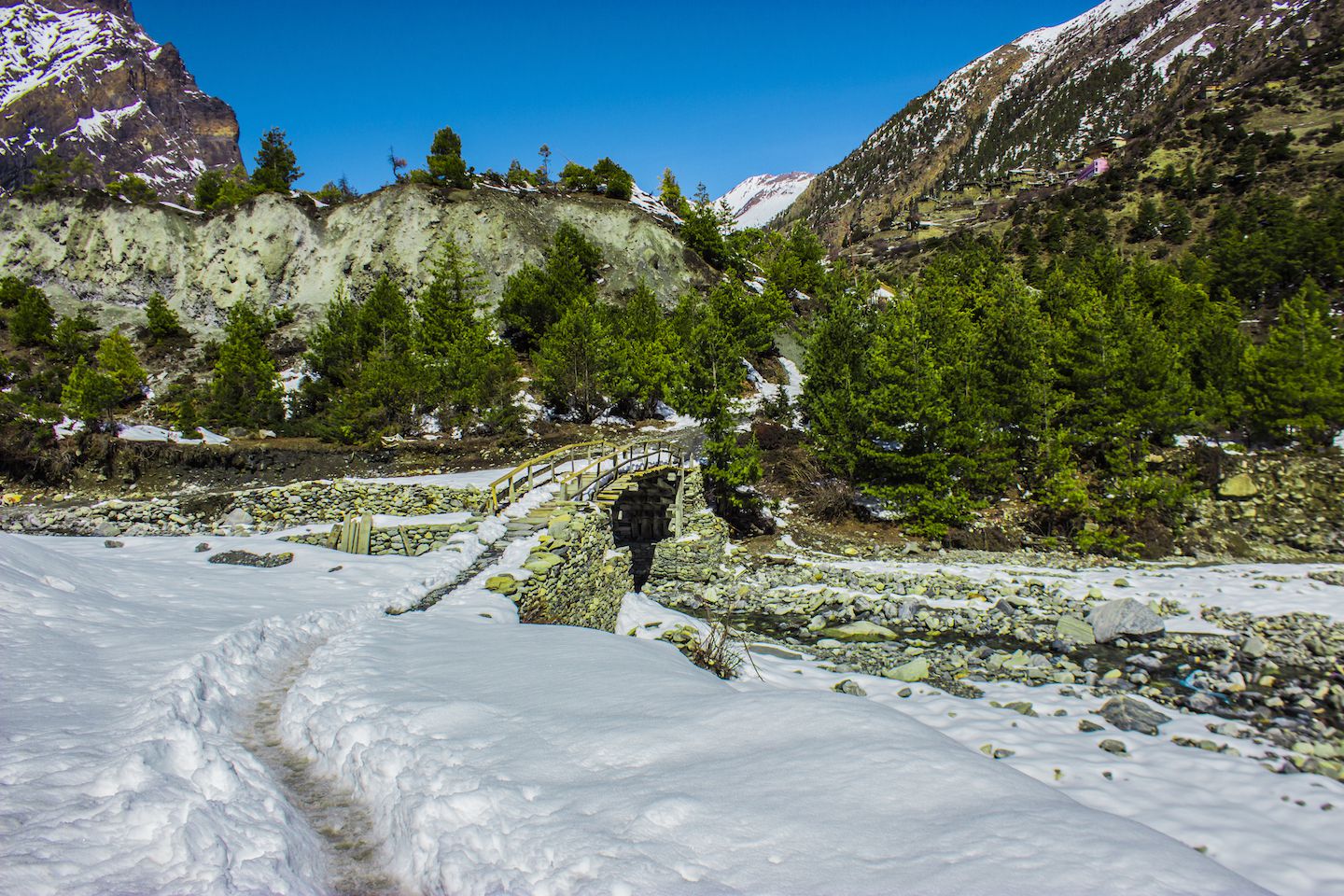
Good news was that in the morning, the snow was solid and hardened from the night. So often times it was easier to walk directly on the thick snow than the foot trodden path. While the path had served us well, it had its limitations. It was narrow, so sometimes you had to put one foot directly in front of the other (i.e. model walk), which was easy to lose balance. The path was usually not even, one side higher than the other, probably due to previous trekkers compacting the snow randomly. It was easy to slip from the higher level down to the lower level, especially when the higher level was narrow and slippery. We both fell a few times, but they were only minor slips. The good thing about the snow was that it cushioned our falls and we barely felt anything.
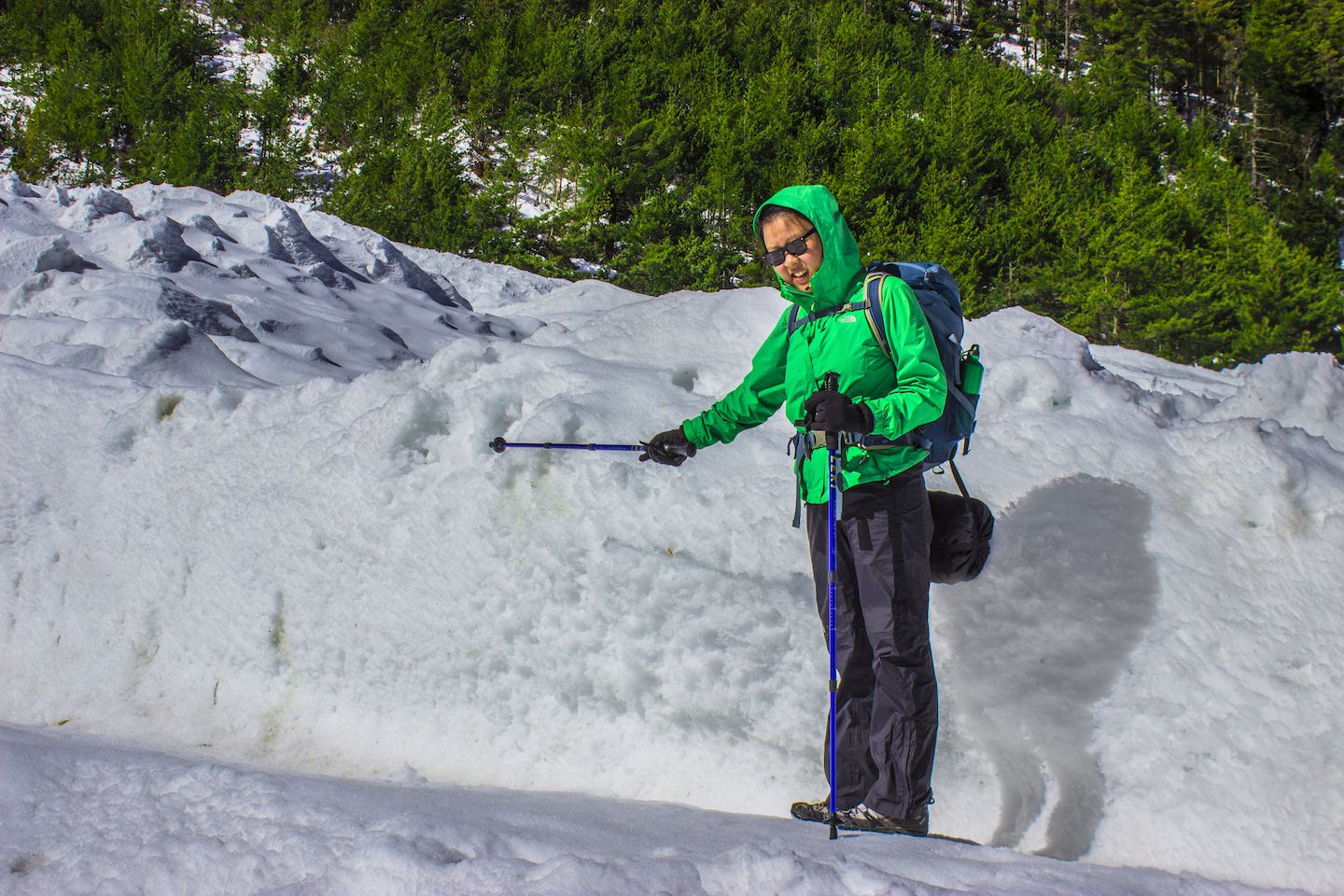
We passed by yet another post-avalanche site today on the lower route. This one was much larger and spread out than the one yesterday. It felt like we took a while to cross the whole thing, and there were plenty of opportunities to appreciate just how much snow there was around.
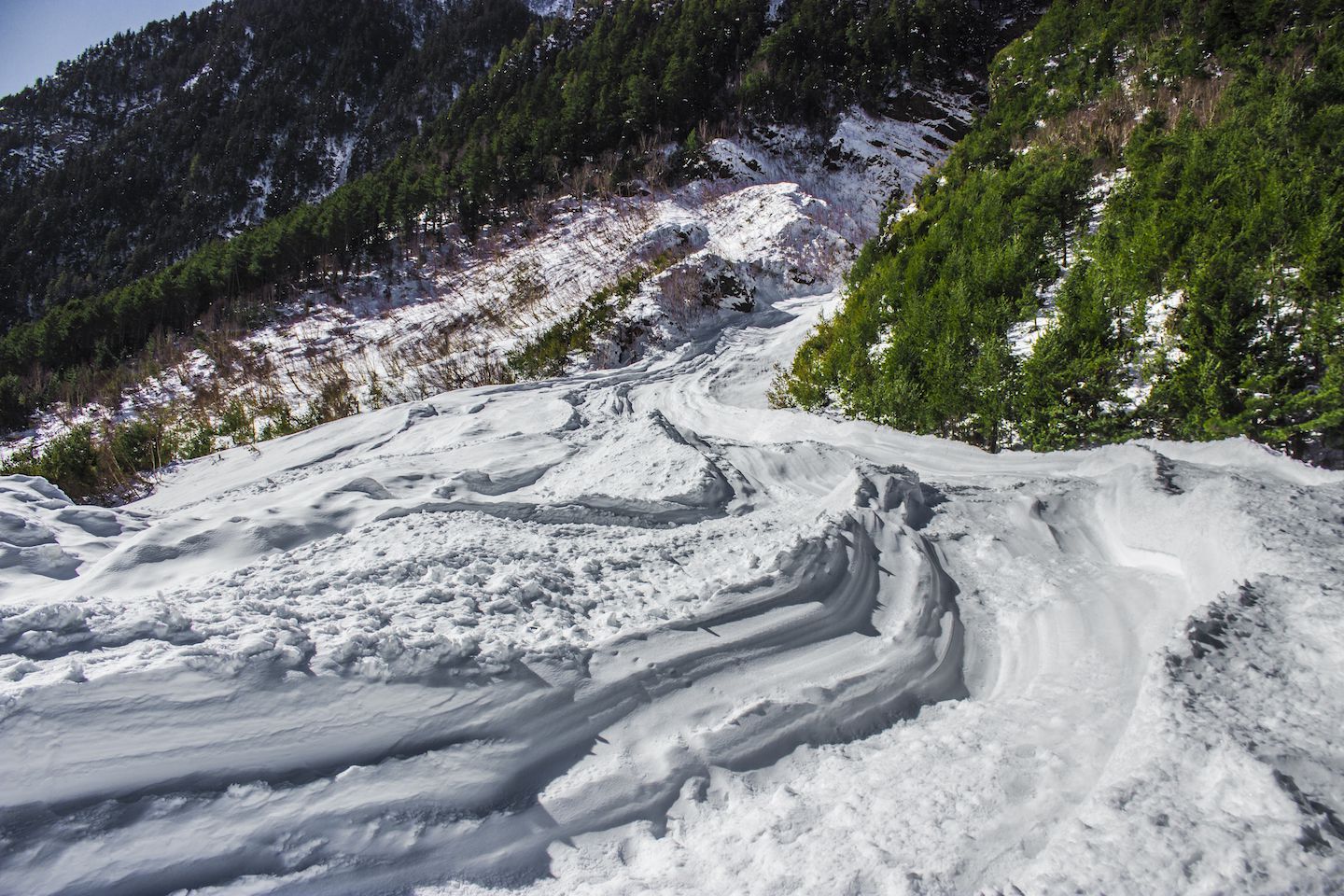
We saw thick walls of compact snow… except that no one knew how much thick snow we were standing on already! It was like seeing a small tower whilst already on top of a large one. This time it was nowhere near as dramatic as yesterday since there was a pretty clear foot path. We trudged through without any problems. Though how many more we could handle without proper snow gear was questionable, especially if the snow was significantly thicker.

When Lower Pisang was in sight, we veered off the main trail to a suspension bridge that took us to the other side of the valley towards Upper Pisang. The village of Upper Pisang was basically houses scattered on this steep, steep hill, high in the valley.
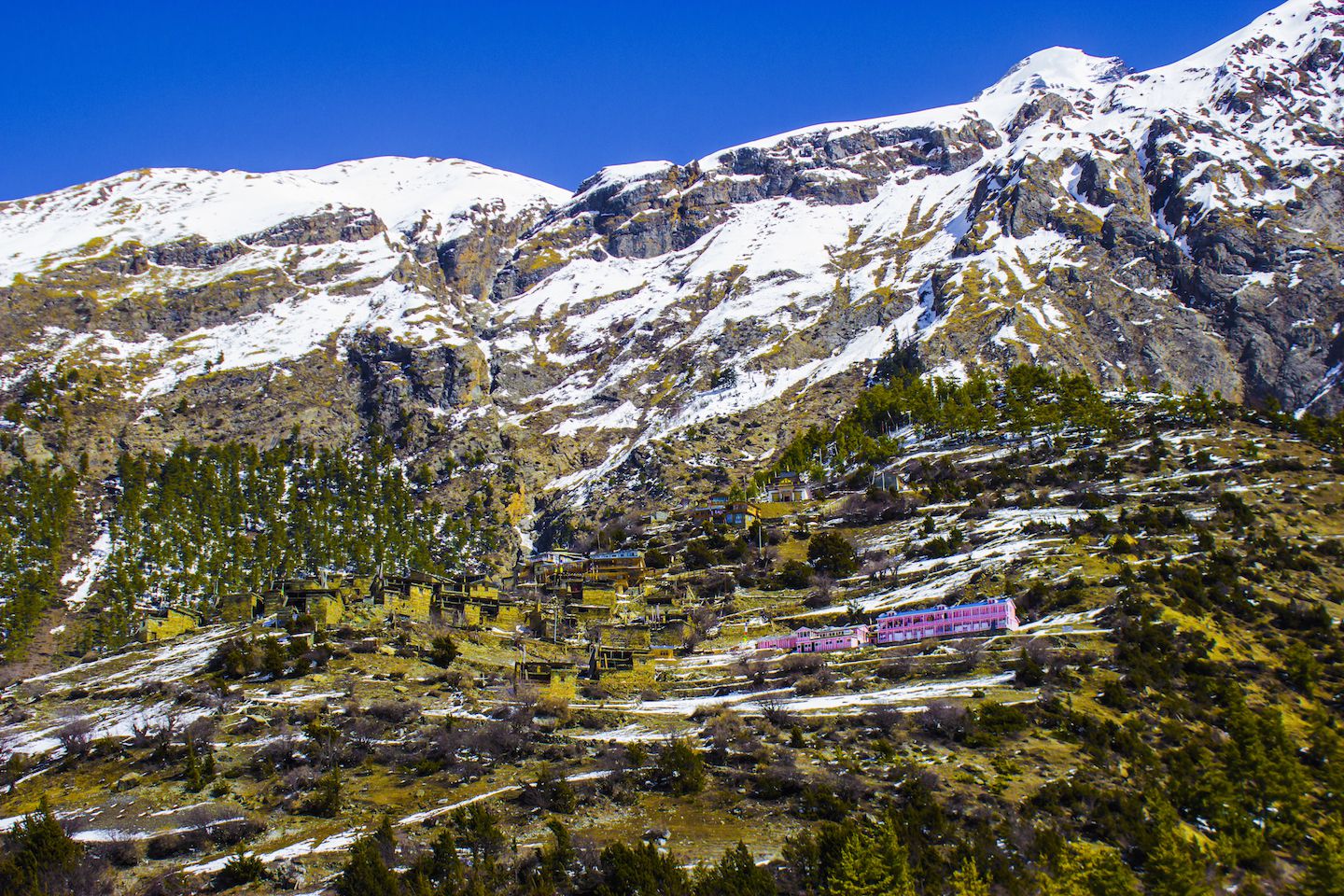
The stairs up from the suspension bridge lead to no trail so we created our own. With little to no snow on this sunny side, the climb towards the lodges we could see up the hill was safe but exhausting. We knew we made it when we saw the Upper Pisang gates!
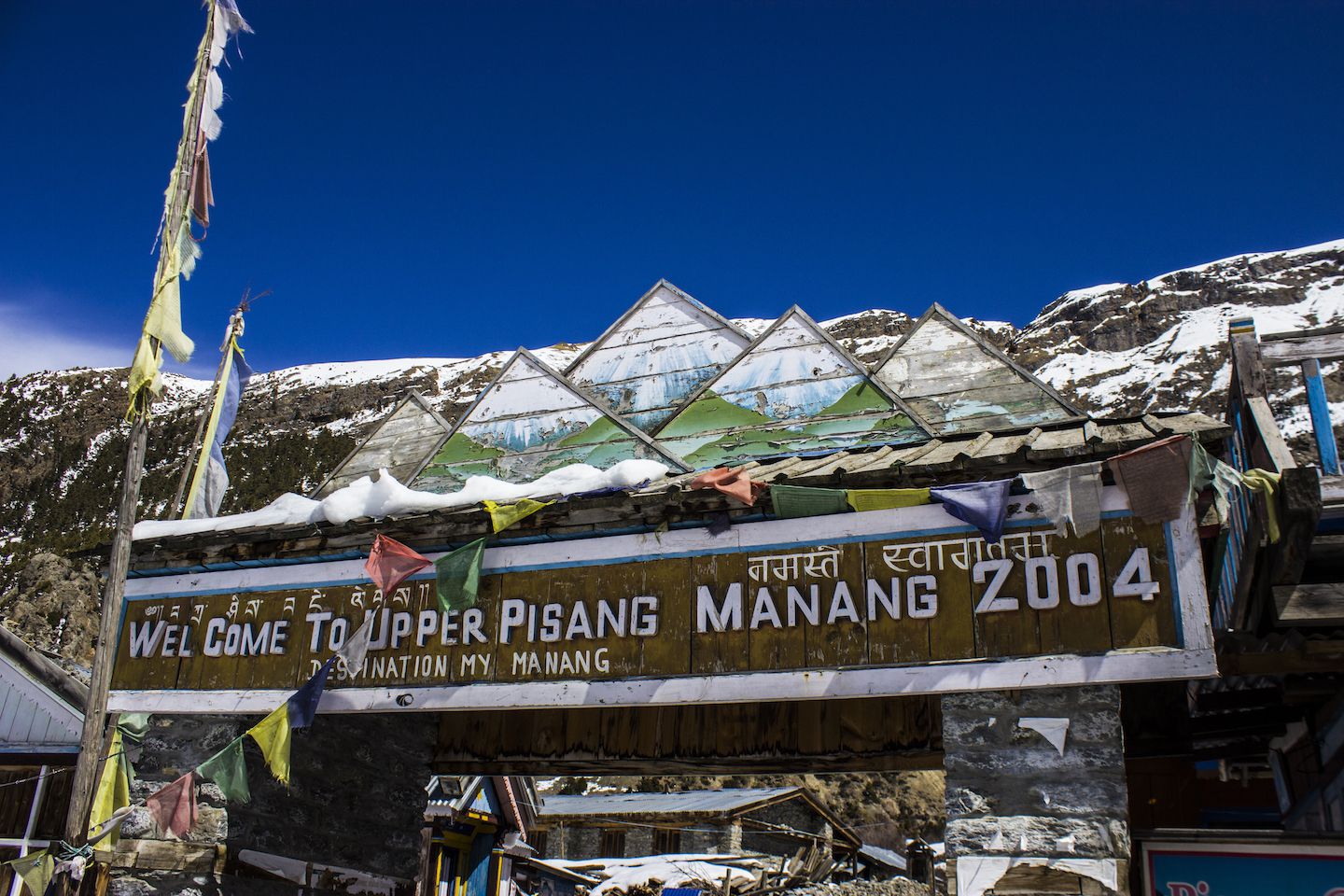
We chose a teahouse higher up in the village. It was still early in the day, so we had plenty of time to enjoy the sunlight and the panoramic rooftop views. Beautiful doesn’t even begin to describe it. This was why we had trudged through all the snow. Pisang Peak was behind us, towering over all the houses. Annapurna II was no longer hidden by mountains but mostly exposed to us. It was, in one word, magnificent. The valley onwards held much promise for even more scenic views to come. The photos show what I could never adequately describe in words. Click on the two panorama photos below to see the enlarged versions – it’s worth it!

The rest of the day were some of our favourite times during the whole trek. We soaked in everything as much as we could, knowing full well that this adventure could end tomorrow.
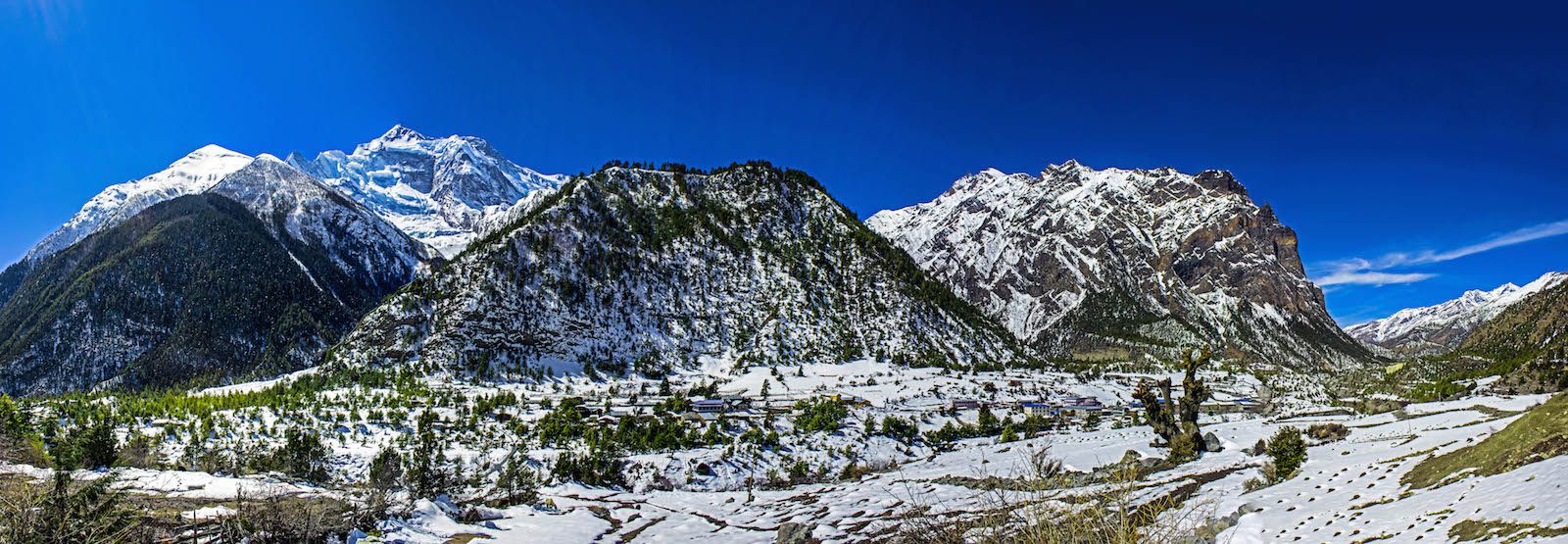
The teahouse food were some of the best we’ve had yet, from dhal bhat to spring rolls to noodle soup to peach and apple tea. The fellow trekkers we met at night were great company and we had entertaining conversations about all of our travels. I hoped it would never end.
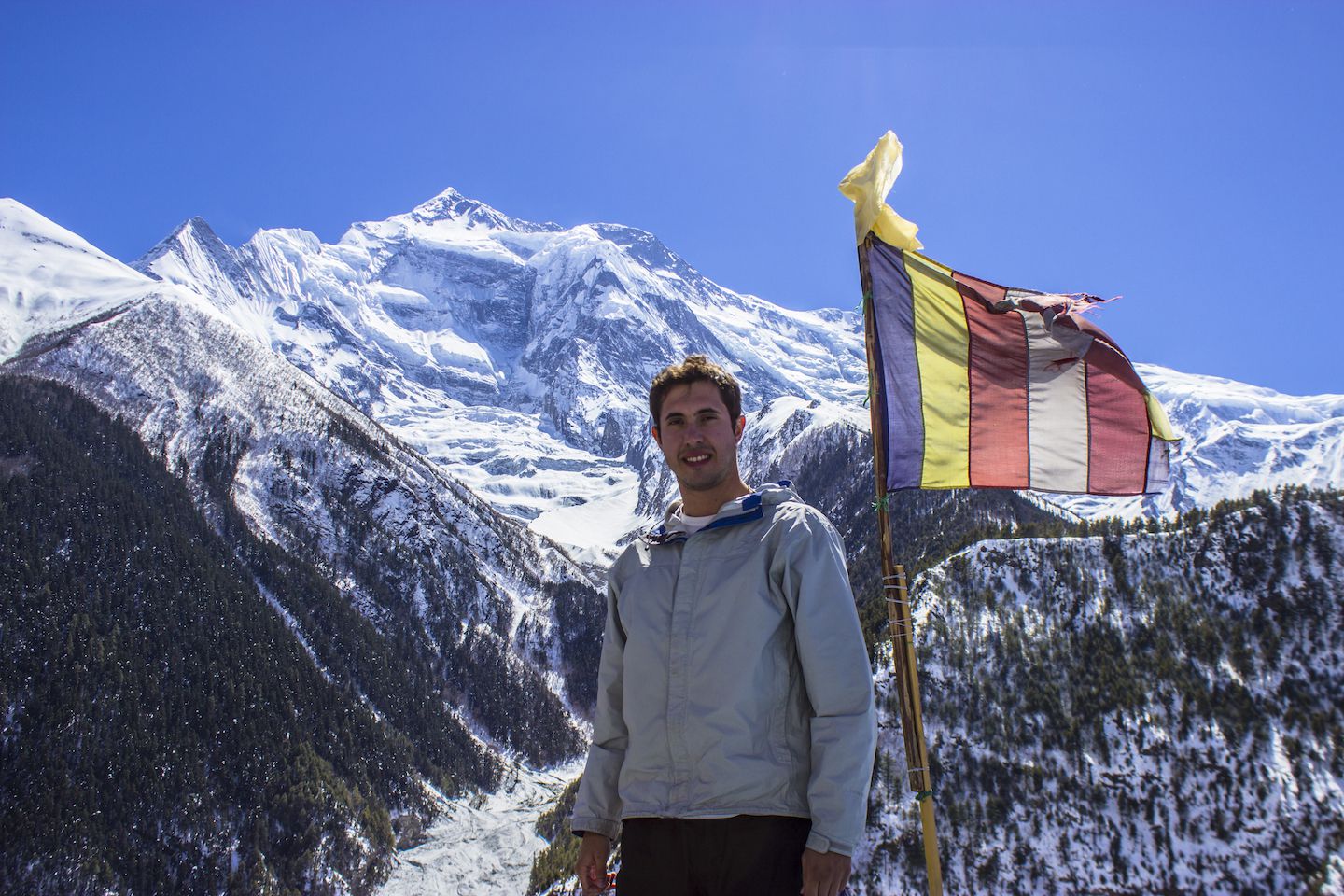
Come bed time, we knew it was time to make a decision. There was no reason to delay it any longer. Upper Pisang was worth it for the view, but anywhere beyond that would only be postponing the inevitable decision. There was no point spending a few more days going a few villages further to be equally uncertain but have to face the same choice. We also don’t have that much time. We can’t afford to wait weeks for the snow to melt and still trek the whole circuit plus the time we need afterwards. So waiting a one nor two days is basically like not waiting at all. We also found out that the weather forecast predicted another snow storm coming in two days, which would make the conditions even worse.
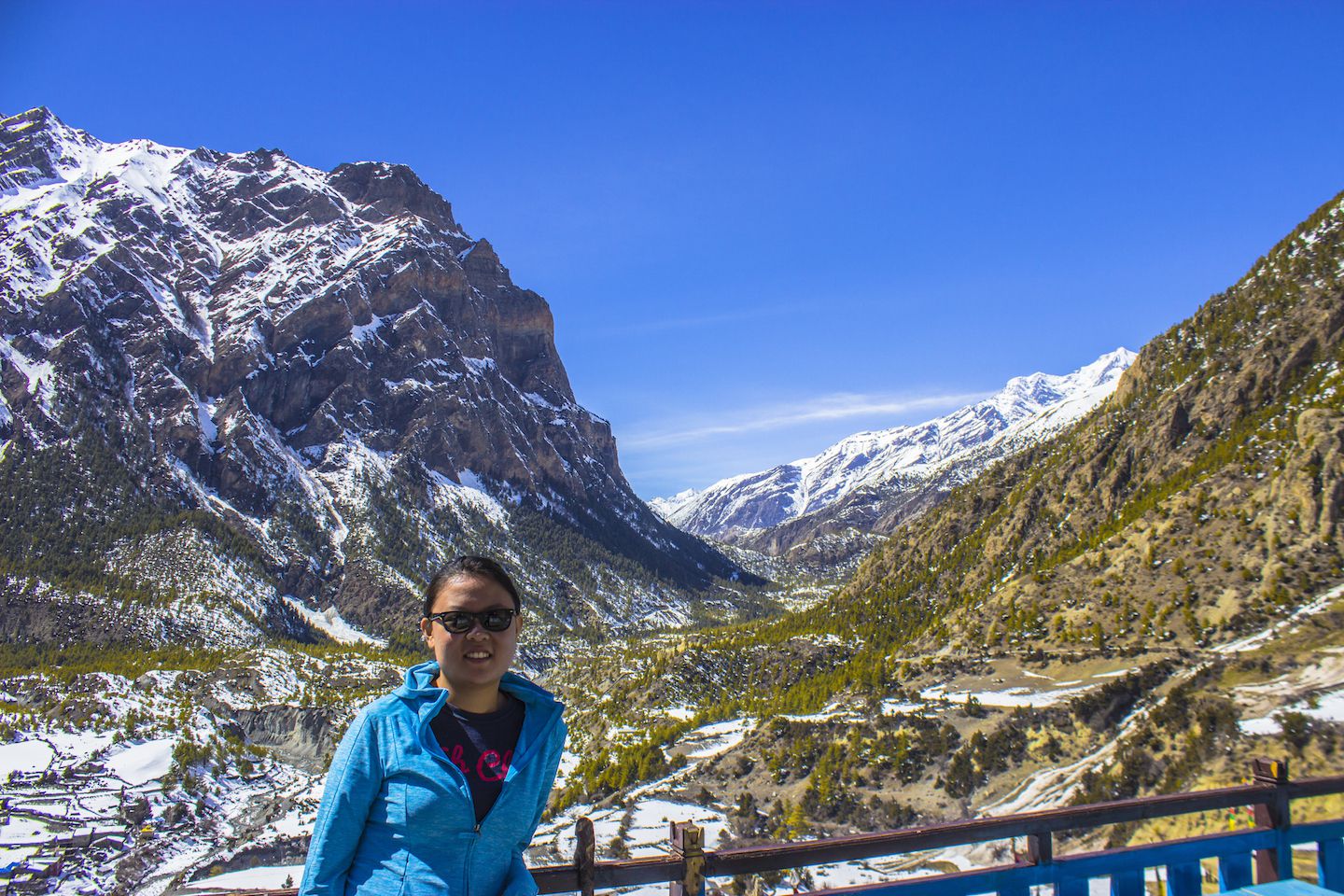
We talked about it for at least an hour. It went back and forth – we considered tossing a coin. It was lose lose situation. We go down, and the whole thing ends right here. We go up, we still don’t know if Thorong La Pass will open or be accessible enough for us to make it safely; in the chance that we deem it too dangerous to cross, we will only have more distance to cover on the way down. If we go down, we will feel bad about quitting and not going further. If we keep going up, we will continue to feel the same uncertainty and doubt and hear the same rumours that have been persisting for days. It was going to feel like we made the wrong decision either way.

Ultimately, we decided to head down. It came down to a few key things. First and foremost, our safety is always our first priority. We don’t ever want to put ourselves in life-threatening circumstances and with the new storm coming, the situation would be bad again. Secondly, our goal was never just to cross Thorong La Pass, it was to enjoy the scenery along the entire Annapurna Circuit. That’s why we chose this trek over all the other ones, because it wasn’t about one pass or one base camp, but the whole trail from start to finish. And lastly, we wanted these 15 days to be an enjoyable experience, something we looked back on with fond memories. If we continued on, it would be more of the same stressfully uncertain situation. Even if we were to make it across, we would remember the first ⅔ of the trek in a bad light. So given our priorities and goals, it made the most sense to head down and come back another time. When the weather is better, we will trek the Annapurna Circuit the way it’s supposed to be trekked.
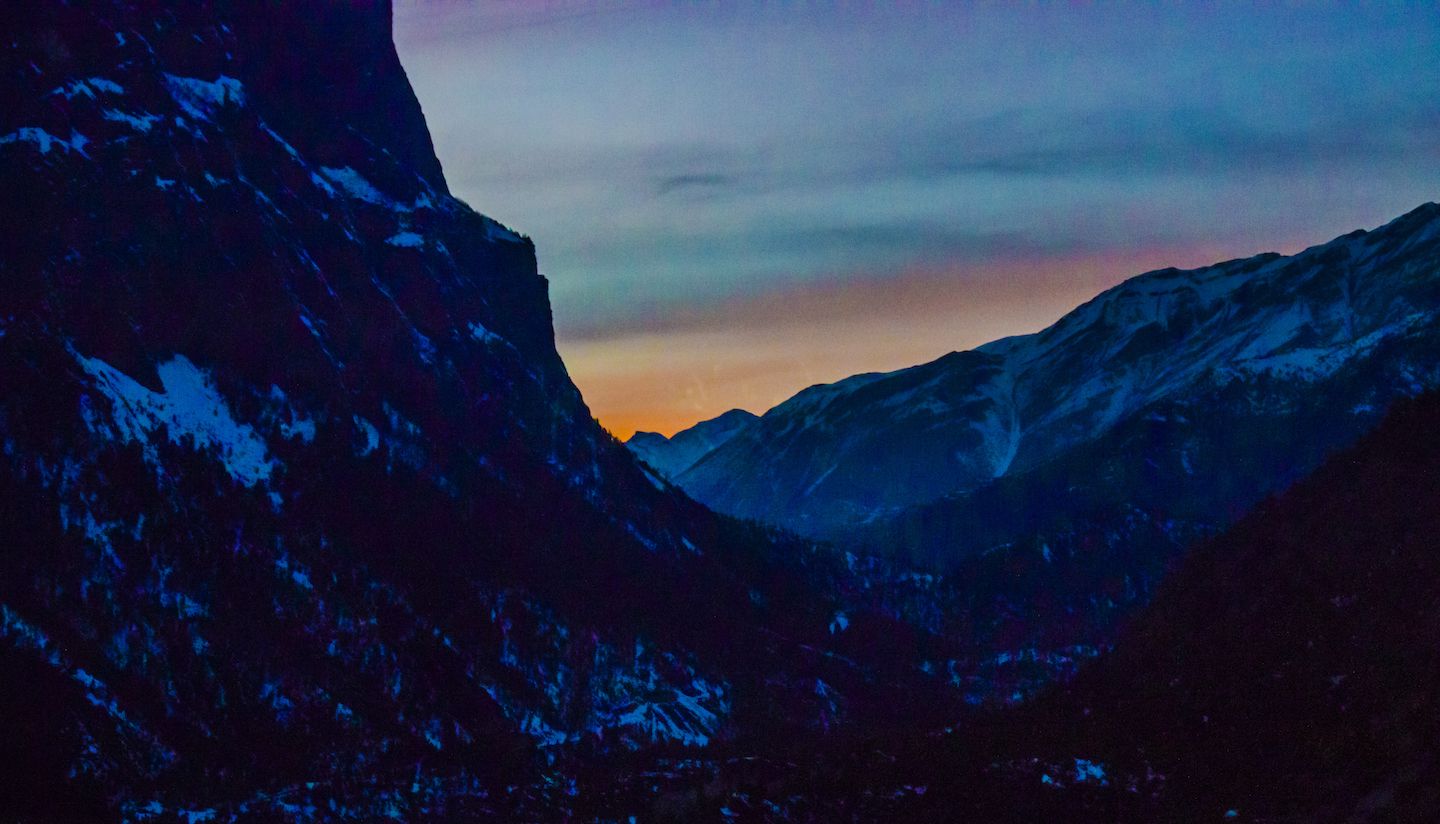
Continue to read Trekking Annapurna Day 5: Heading Down…
For more pictures from Dhikur Pokhari and Upper Pisang, please visit the gallery!

